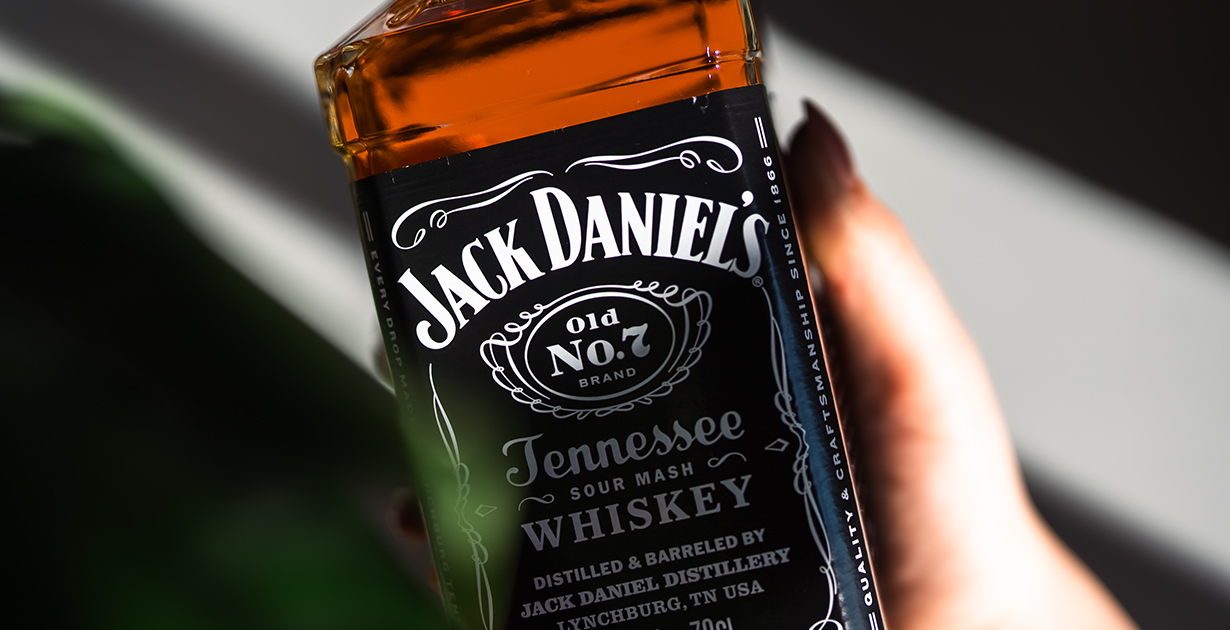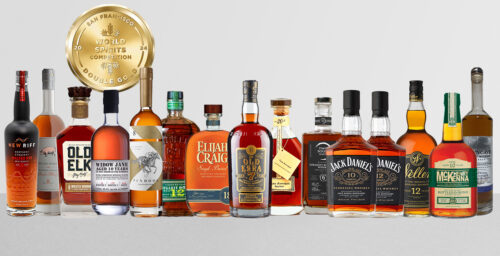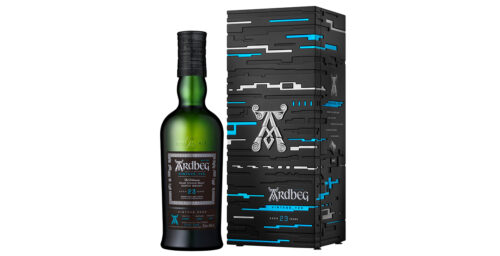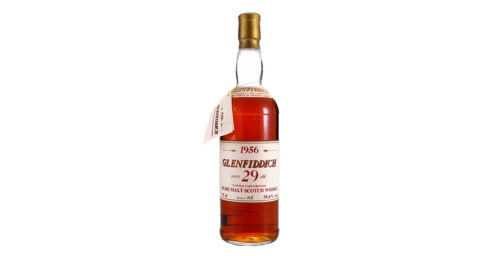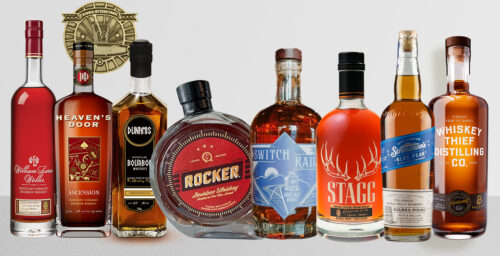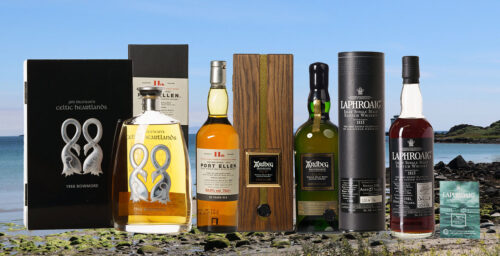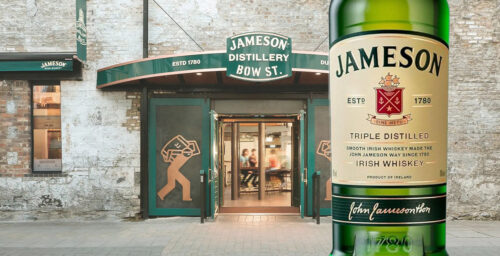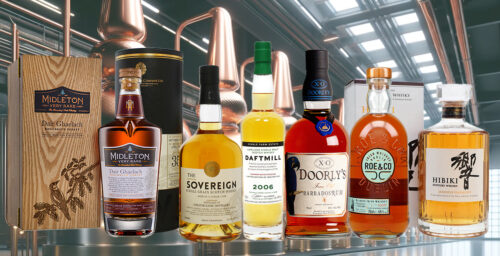Jack Daniel’s Tennessee Whiskey, renowned as America’s top whiskey and a global best-seller, has achieved iconic status. The core bottling, Jack Daniel’s Old No. 7, is produced following a traditional recipe and has a smooth woody character with notes of vanilla and honey.
Over the years the range has expanded to include rye and flavored whiskey expressions along with the high-end ‘Single Barrel Select’ offering aimed at the premium end of the market.
Testament to the brand’s cult status and continuing success is the fact that Jack Daniel’s merchandise ranges from glassware, apparel, and poker sets to partnerships with Harley-Davidson to build exclusive motorcycles.
Jack Daniel’s Tennessee Whiskey has become deeply embedded in the American cultural fabric, playing a significant role in BBQ traditions, and supporting a host of emerging musicians and bands.
Revered for years across the U.S., it has won the admiration of celebrities, including the iconic Frank Sinatra, who was rumoured to be buried with a bottle of Jack Daniel’s. Its presence in renowned movies like Scarface (1983) has further elevated the brand’s global stature.
Production at Jack Daniel’s
Unlike Scotland’s malt whisky which is distilled from malted barley, Jack Daniel’s Tennessee Whiskey is produced from a sour mash grain recipe consisting of 80% corn, 12% barley and 8% rye mixed with spring water.
The resulting distillate meets the US regulatory criteria for classification as a straight bourbon. Although, the distillery states an additional production step known as the ‘Lincoln County Process’ makes Jack Daniel’s more than bourbon – it makes it Tennessee Whiskey.
The ‘Lincoln County Process’ involves filtering the distillate drop by drop through large vats filled with charcoal to remove imperfections. The charcoal used is produced at the Jack Daniel’s distillery site by burning hard sugar maple wood in an open-air fire that peaks at 2000 degrees Fahrenheit, hence maintaining an onsite fire department.
Tennessee state law requires all distillers to meet the same quality standards and production processes used by the Jack Daniel’s distillery for products produced in the state labelled as ‘Tennessee Whiskey’.
Following this charcoal mellowing the whiskey is laid to rest in the multi-storied warehouses at the distillery. These vary between three and seven stories and contain a minimum of 7,000 barrels.
As the temperature varies across the warehouse levels whiskey matures slightly differently depending upon where barrels are stored, a feature utilised by Jack Daniel’s to store the barrels for specific expressions and products at different positions in the warehouses.
For instance, the Green Label is a lighter younger style whiskey drawn from barrels stored on lower floors at the centre of the warehouse where whiskey matures more slowly. Maturation usually takes four to six years at the Jack Daniel’s distillery depending on the respective product and the effect on individual barrels.
Early Years: Jack Daniel, Born to Make Whiskey
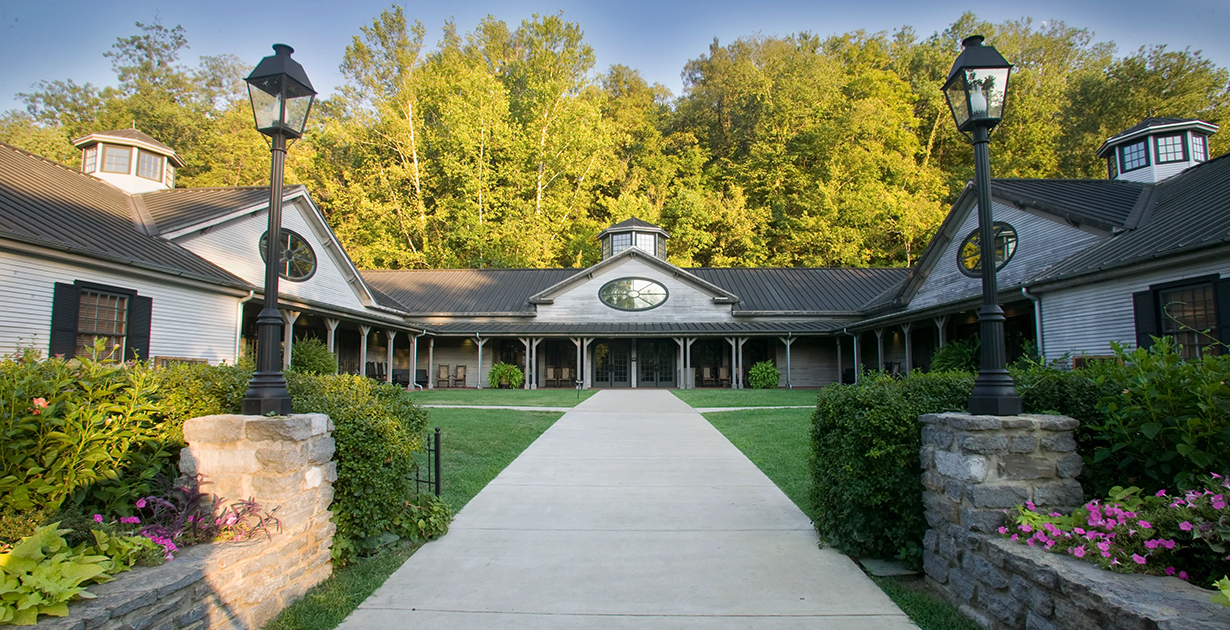
Situated in Lynchburg, Tennessee, a town approximately 70 miles south of Nashville, America’s best-known whiskey distillery is named for its founder Jasper Newton “Jack” Daniel.
Following his father’s death in the American Civil War, Jack Daniel left home and was taken in by Reverend Dan Call, a Lutheran minister and moonshine distiller, in 1864. Daniel went on to learn the art of distilling from Call and his distillery worker Nathan “Nearest” Green, an enslaved African American man.
After a dispute concerning his father’s estate was settled, Daniel used his inheritance to found a legally licenced distillery in partnership with Dan Call. The establishment date is contested, with the modern Jack Daniel’s brand stating the distillery was founded in 1866 which would make it the first whiskey distillery to be registered in the USA.
In contrast, Daniel’s biographer Peter Krass records in the 2004 biography Blood & Whiskey: The Life and Times of Jack Daniel that official registration documents assert the distillery was not established until 1875.
Dan Call quit the distilling partnership soon after its creation for religious reasons, allegedly under pressure from his wife and congregation for “working for God on Sunday and then making liquor on Monday”.
Acquiring full control of the fledgling distillery, Jack Daniel appointed the now-freed Nathan “Nearest” Green as the first head distiller. (An expression of Uncle Nearest recently was recently named ‘World’s Best Tennessee Whiskey’ at the World Whiskies Awards 2023).
In 1884, Daniel purchased Cave Spring Hollow and the surrounding land for $2,148, gaining a clean spring water source and location to build the distillery’s permanent home.
After building the distillery Jack opened two bars in the Lynchburg town square in 1892 named the White Rabbit and Red Dog saloons.
At a time when spirits were bottled from the barrel by individual grocers, Daniel began bottling directly at the distillery in 1895 to convey a sense of fairness and integrity to customers. After much deliberation the iconic square bottle was chosen with Daniel commenting that it was “A square bottle for a square shooter”.
In 1904 the World’s Fair in St Louis, Missouri, introduced the latest scientific and cultural innovations to the world which included the Jack Daniel’s Old No. 7 Tennessee Whiskey. Competing amongst 24 entries from around the world, the Old No. 7 earned the gold medal for World’s Best Whiskey.
Various theories surround the origins of the ‘Old No. 7’ brand name – some say it refers to the seventh recipe experiment to generate the perfect mash for the whiskey, while others suggest it refers to the government registration number Daniel received for the distillery.
The Battle Against Prohibition
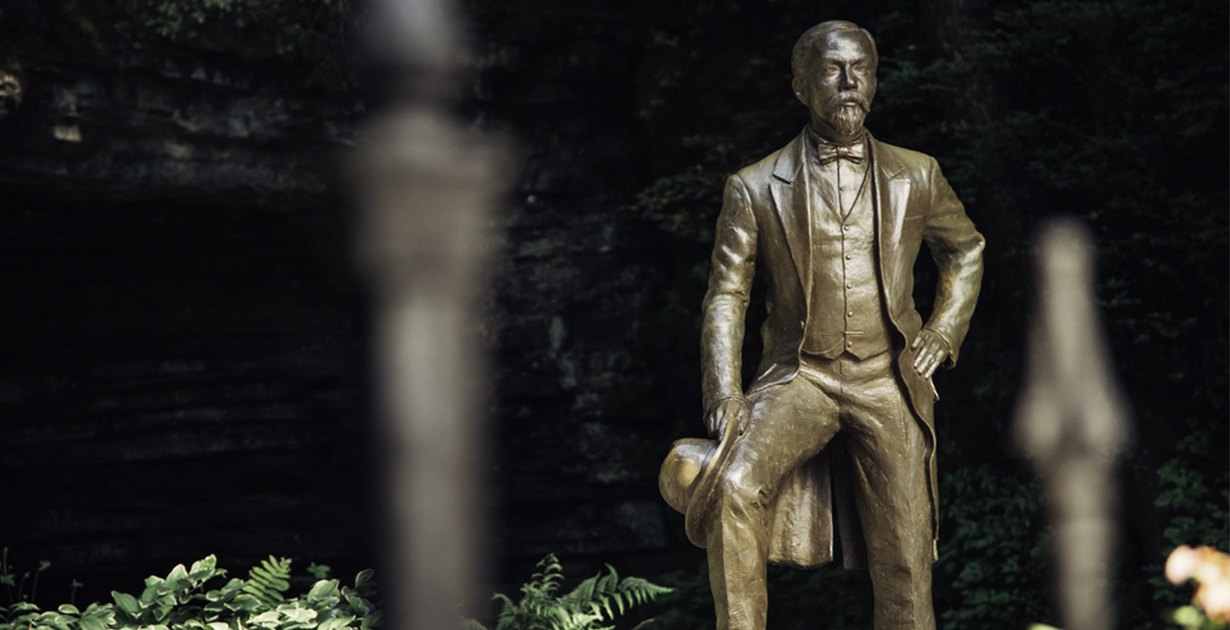
With no wife or children as heirs, Jack Daniel passed control of the distillery to his nephew Lem Motlow in 1907 before passing away in 1911. In 1910, Tennessee passed a statewide prohibition law, effectively preventing the legal distillation of Jack Daniel’s within the state. Motlow attempted to relocate Jack Daniel’s distilling operations to St Louis, Missouri, and Birmingham, Alabama but then prohibition began nationwide on January 17th 1920 following the ratification of the US Eighteenth Amendment.
After thirteen years, prohibition was repealed at US federal level in 1933. However, state prohibition laws including Tennessee’s remained in effect, continuing to prevent the Jack Daniel’s Lynchburg distillery from reopening.
Lem Motlow, who had by now been elected Tennessee State Senator, led efforts to repeal state prohibition laws in 1938. However, a number of Tennessee’s counties opted to remain dry – including Moore County where the Jack Daniel’s Lynchburg distillery is located.
After further lobbying from Motlow, a bill was passed allowing whiskey to be produced in Tennessee and sold in other states – Jack Daniel’s could finally resume production in Lynchburg.
In 1941, Lem Motlow commissioned a life-size statue of Jack Daniel, which was erected in front of Cave Spring Hollow. Following intense negotiations between Lem’s son Reagor Motlow and the US government in 1941, Jack Daniel’s Tennessee Whiskey achieved official approval as a distinct product labelled as whiskey rather than bourbon thanks to the charcoal mellowing ‘Lincoln County Process’.
The Jack Daniel’s distillery was then forced to cease operating between 1942-1946 when the US government banned the production of whiskey for the duration of the Second World War.
Post-war production resumed at Jack Daniel’s in 1947, when good-quality grain was more readily available for distilling. After guiding the distillery through Prohibition, the Depression and wartime closure, Lem Motlow passed away in 1947.
Jack Daniel’s: Birth of an Iconic Brand
In 1956, Jack Daniel’s was sold to Brown-Forman Corporation, an American-based wine and spirit company. However, the Motlow family continued to operate and manage the distillery.
In 1964 the brand introduced its well-recognized black and white label and initiated a new advertising campaign. On September 14, 1972, the Jack Daniel’s distillery earned a place on the US National Register of Historical Places.
Until 1987 Jack Daniel’s Tennessee Whiskey (with the black label) had an alcohol content of 45%, which translates to 90 U.S. Proof. Post-1987, the alcohol content for the same whiskey was slightly reduced to 43%, which is 86 Proof.
In 1988 the brand introduced a new variant called “Gentleman Jack” which undergoes a second charcoal mellowing before bottling to achieve exceptional smoothness. As Jack Daniel’s Old No. 7 is a popular sauce ingredient in US BBQ culture, Lynchburg hosted the first annual Jack Daniel’s World Championship Invitational Barbecue Competition in 1989.
Although Moore County remained dry, a 1994 Special Act of the Tennessee Legislature permitted the Jack Daniel’s distillery to sell one commemorative bottle to each guest on site from January 1995.
In February 1997 the first Jack Daniel’s Single Barrel Select bottlings were released, each drawn from individual barrels. As this Single Barrel range has evolved the distillery now offers customers the premium option of purchasing an entire barrel for bottling and receiving a whiskey of distinct flavour for approximately $10,000.
In 1999, the Jack Daniel’s distillery opened a visitor’s centre which sells commemorative bottlings of Gentleman Jack, Single Barrel Select, and Old No. 7 in distillery-exclusive decanters at the White Rabbit Bottle Shop.
Ongoing Success
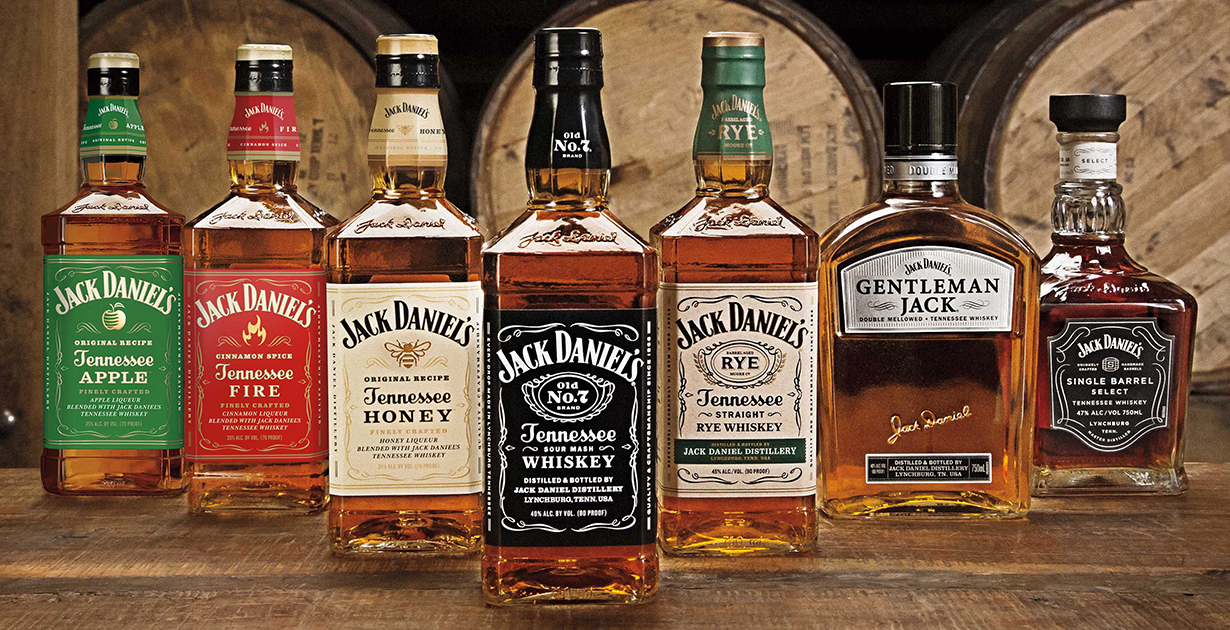
From 2002, all generally available bottlings were reduced to 80 U.S. Proof, although without any public publicity or announcement from the distillery.
Despite a petition from Modern Drunkard Magazine of over 13,000 signatures, the Jack Daniel’s distillery stood by their decision and argued that the reduction made their whiskey more accessible to a wider range of drinkers. Expanding the range to attract a new generation of drinkers the first flavoured expression, Tennessee Honey, launched in 2011 followed by the cinnamon-flavoured Tennessee Fire in 2015 and Tennessee Apple in 2019.
Introducing the first new mash formula since the inception of Old No. 7, Jack Daniel’s pioneered America’s revival of rye whiskey by unveiling Single Barrel Rye in 2015. This whiskey is distilled from a blend consisting of 70% rye, 18% corn, and 12% barley. Following this, Jack Daniel’s Tennessee Rye, a conventional rye whiskey, was released in 2017.
In response to growing global demand a new cooperage was opened in 2014 in Lawrence County, Alabama, crafting hundreds of barrels from American white oak each day.
The distillery does not refill barrels and so uses each only once. After being used once to mature Jack Daniel’s whiskey most barrels are then sold on to a variety of producers including Scotland’s whisky distilleries, American tabasco sauce producer the McIlhenny Company and the rum distillers Mount Gay Rum and Appleton Estate.
Other barrels are repurposed, for example as garden planters. In 2016 the Jack Daniel’s distillery celebrated its 150th anniversary, marking the event by commemorating the key role played by Nathan “Nearest” Green in the early years of the distillery and in the development of Jack Daniel’s Tennessee Whiskey.
Jack Daniel’s Timeline
1864 Following his father’s death, Jasper Newton “Jack” Daniel is taken in by Reverend Dan Call, a lay preacher and moonshine distiller. Jack Daniel learns distilling from Dan Call, and Nathan “Nearest” Green, an enslaved African American man.
1866 – 1875 On receiving an inheritance, Jack Daniel partners with Dan Call to found a legally licenced distillery. The establishment date is contested, with the modern brand states the distillery began in 1866, making Jack Daniel’s the first distillery registered in the U.S., while sources examining official registration documents argue establishment did not occur until 1875.
Dan Call quits the partnership for religious reasons, leaving Jack Daniel to take control of the distillery. Nathan “Nearest” Green is appointed head distiller.
1884 Jack Daniel purchases Cave Spring Hollow and the surrounding land for $2,148 and establishes a permanent distillery at the site.
1892 Jack Daniel opens two bars in the town of Lynchburg, Tennessee called the White Rabbit and Red Dog saloons.
1895 Jack Daniel begins using the iconic square bottles, intended to convey a sense of fairness and integrity.
1904 Jack Daniel’s Old No. 7 takes a gold medal at the 1904 St Louis World’s Fair.
1907 Jack Daniel begins training his nephews in aspects of the distilling business, one of whom, Lemuel “Lem” Motlow becomes distillery bookkeeper.
In 1907, Lem Motlow takes control of the distillery, following the retirement of Jack Daniel.
1910 Tennessee passes a statewide prohibition law in 1910, effectively preventing the legal distillation of Jack Daniel’s within the state.
1911 Jack Daniel passes away in 1911 from blood poisoning.
Lem Motlow makes failed attempts to relocate distilling operations to St Louis, Missouri, and Birmingham, Alabama to circumvent the Tennessee prohibition law. He also appoints his brother Jess Motlow as Master Distiller.
1920 Following ratification, nationwide prohibition begins on January 17th 1920.
1933 Prohibition is repealed at US federal level, although state prohibition laws including Tennessee’s remain in effect, preventing the Jack Daniel’s Lynchburg distillery from reopening.
1938 Elected as a Tennessee state senator, Lem Motlow leads efforts to repeal state prohibition laws allowing Jack Daniel’s production to resume in 1938.
1941 Lem Motlow commissions a life-size statue of Jack Daniel, which is erected at the Cave Spring Hollow.
Jack Daniel’s achieves official approval for the distinctive classification of Tennessee Whiskey, characterised by additional charcoal mellowing known as ‘The Lincoln County’ process.
1942 The distillery ceases operations when the US government bans the production of whiskey due to the Second World War between 1942-1946.
1947 Production resumes at the Jack Daniel’s distillery. Lem Motlow passes away.
In a New York City bar, Jackie Gleason introduced Frank Sinatra to Jack Daniel’s Tennessee Whiskey – creating a lifelong enthusiast.
1956 The distillery is purchased by the Brown-Forman Company.
1964 The iconic black and white label and advertising is created.
1972 The distillery is listed on the US National Register of Historical Places, from September 14th 1972.
1987 Previously produced at 90 U.S. Proof (45% alcohol volume) Jack Daniel’s black label is reduced to 86 Proof. Jack Daniel’s black label is regarded as the premium bottling, while a Jack Daniel’s green label becomes the standard bottling released as 80 Proof.
1988 Double-mellowed Gentleman Jack is launched on the US market.
1989 The first annual Jack Daniel’s World Championship Invitational Barbecue Competition takes place in Lynchburg.
1994 A 1994 Special Act of the Tennessee Legislature allows the Jack Daniel’s distillery to sell commemorative decanters on site from January 1995.
1997 In February 1997 the first Jack Daniel’s Single Barrel Select bottlings are released.
1999 The distillery visitor’s centre opens.
2002 All generally available bottlings are reduced to 80 Proof.
2011 Tennessee Honey is released.
2014 A new Jack Daniel’s cooperage opens in Lawrence County, Alabama crafting hundreds of barrels daily.
2015 Jack Daniel’s Single Barrel Rye Whiskey is launched.
Tennessee Fire is released.
2016 The distillery celebrates the distillery’s 150th anniversary underlining their claim that registration and establishment occurred in 1886.
2017 Tennessee Rye is launched.
2019 Tennessee Apple is released.

